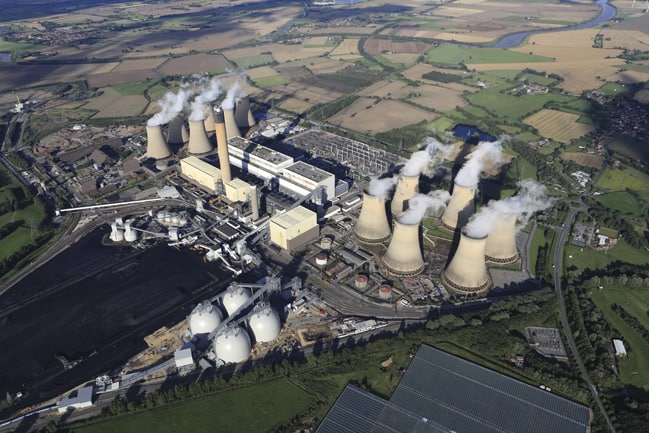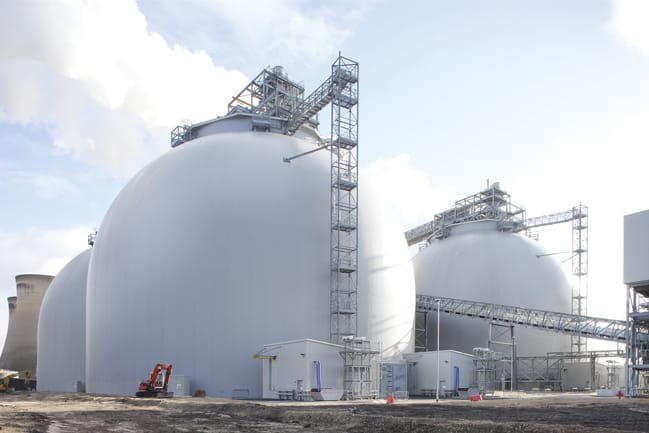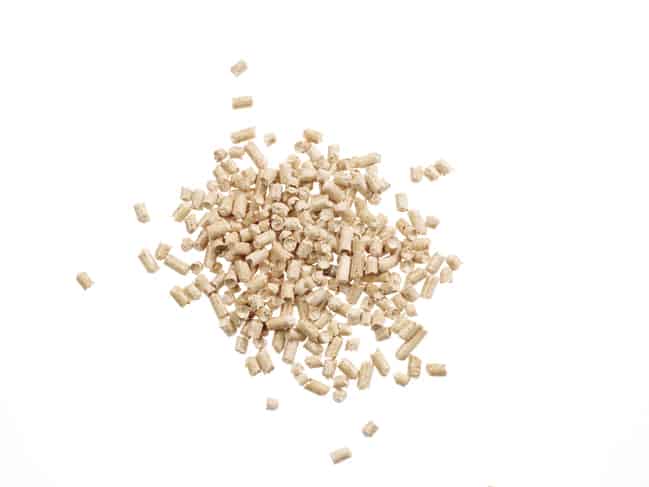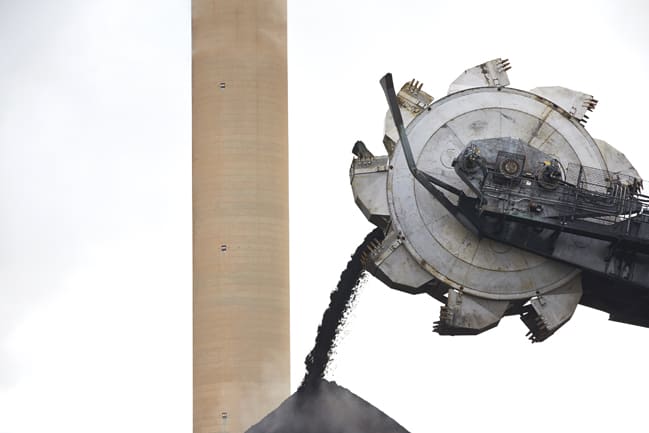
Peter Emery
Executive Group Operations Director, Drax Group PLC
Education
1973 - 1980 - Altrincham Grammar School for Boys
1980 - 1981 - Pre-University Work Experience – Johannesburg Consolidated Investment Co (Coal/Gold/Uranium/Platinum/Antinomy Mining)
1981 - 1984 - University of Nottingham BSc (Hons) Mining Engineering 1st Class
Career
1984 -2004 – Esso Petroleum Company Limited / ExxonMobil
1984 -1991 - Industrial Sales, Strategic Planning, Distribution Operations (Plant Manager, Avonmouth & Terminal Manager, Purfleet)
1991 -1992 - Exxon Company International, New Jersey USA, Downstream Marketing Capital Budget Coordinator (Far East then Global)
1992 -2004 - Fawley Refinery, Leadership Positions in Zonal Operations, Refinery Maintenance Manager, Refinery Operations Manager responsible for all refinery operations and member of the ExxonMobil European Leadership Team for Refining & Supply
2004-2015 - Drax Power/Drax Group PLC
2004 - 2005 - Drax Power Ltd, Production Director and member of the Executive Team which floated Drax on the LSE (Dec 2005)
2005 - 2015 - Drax Group PLC, Executive Production Director responsible for all plant operations, security, project execution and the development of CCS
2009 - Elected Fellow of the Institute of Materials, Minerals and Mining (FIMMM)
2015 - Present - Drax Group PLC, Executive Group Operations Director responsible for all Group Operations, Strategic Projects, IT and Human Resources
Drax Power Station dominates the skyline around the North Yorkshire town of Selby. Its 3,960MW of generating capacity it the largest of any power station in western Europe; alone it supplies some seven per cent of the UK’s electricity; it has six energy-generating units, each with a nameplate capacity of 667MW – the largest in the UK.

And because energy generation is always a double-edged sword, Drax is also the UK’s largest single source of CO2 and its largest consumer of coal: when running on coal alone, it burns 250,000 tonnes per week in the winter, and emits 22 million tonnes per year of CO2 – about four per cent of the UK total. But its profile is changing, and a clue to this can be found in a cluster of shining-white ovoid domes in a large area in the south west of the site. These hold a different fuel from the pulverised coal the plant was originally designed to burn. While it is probably still best known as a coal-fired power station, Drax is also Britain’s largest generator of renewable power, because it is also the largest burner of biomass. Two of the station’s six turbines have been converted to run solely by biomass firing, with the conversion of a third currently under way.
“By the Autumn, we will have all three units converted,” said Drax operations director Peter Emery. “Initially, the idea was that the furnaces would all co-fire coal and biomass, but the government decided it didn’t like the idea of ‘half-green, half- black’ units.”

He added: “The decision was made that having half of the turbines fired by coal and the other half by biomass would be a better idea, and that’s now a requirement.”
Most of the biomass Drax burns is pellets of fast-growing coniferous wood, sourced from sustainably managed forestry in the US, where Drax Power Group, the company that owns and runs the power station, has built and manages plants to convert the felled trees into suitable pellet form for transportation and burning. In addition, it also burns what it calls ‘residual agricultural products’ – straw and the husks of sunflower seeds and peanuts processed for edible oil production – and specifically grown ‘energy crops’ such as miscanthus, a fast-growing, low-mineral, fibrous grass that can flourish on poor-quality land unsuitable for food crop cultivation.
As policy, Drax’s wood pellets do not contribute to a net increase in carbon emissions across the entire process of growing the trees, processing the timber, transporting the finished pellets, storing them or burning them.

Drax is also keen to stress that the trees it processes into pellets are generally not large, straight, mature trees. Instead, pellets tend to come from prunings and thinnings taken to keep the trees and forests healthy.
“And what’s happened is demand for pulp and paper is dropping quite dramatically. So newsprint, what with the advent of IP and Kindles and the rest of it, and all the recycling, the demand for paper is dropping, and what they do, is they tend to thin the forests out, to enable the larger trees that are needed for construction to grow, the forest thinnings we use for pulp and paper. So what we’re doing is filling the gap that pulp and paper has left behind.
Emery continued: ““We actually helped boost this large-scale industry for making pellets. There was some in Europe, mostly for heating, but there was not industry-scale wood pellet producing in the US.”
The situation is similar in parts of Europe, such as Scandinavia, where pulp and paper had previously been large industries. “But we’ve found it easier to gain access to the market in the US, partly because the infrastructure, railheads and other facilities we need are already there at scale, and it’s easier to be sure of the sustainability credentials, which is absolutely vital for us to meet our mandated targets,” Emery said.
Moreover, the south-west US is a more suitable location to grow pine. “It takes about 25 years for them to mature; whereas in Scandinavia it takes 75 years,” he explained. “That higher productivity again drives down the cost of fuel and reduces the resources needed to grow them. Our view is that we need these global supply chains because we can go to the most efficient, low-cost producer; they might not be the closest, but when you ship 50,000 tonnes at a time, the cost of shipping and the carbon footprint aren’t huge.”
Drax became a biomass user because it was felt there was a need for a business case to reduce its carbon emissions, Emery said. “We were among the largest carbon emitters in Europe,” he added. “So we came up with a three-part strategy in 2005 to make the station as efficient as possible, so we started with a £100m turbine upgrade and we looked at all the heat transfer and heat integration systems, and that in itself saved a million tonnes a year of CO2. But we got to the point where we started to get diminishing returns, so biomass was the next vehicle, and the third, which is our next target, is to explore carbon capture and storage. But where we are today is the culmination of 10 years’ work.”

The initial efficiency improvements were all made with no change to the station’s input, so substituting some of the coal for combustible biomass seemed an obvious step to take, Emery said. “This project saves between 11 and 12 million tonnes of carbon per year; it’s Europe’s largest single decarbonisation project.”
”When you ship 50,000 tonnes at a time, the cost of shipping and the carbon footprint aren’t huge
Converting a coal system to run on biomass requires several things to be changed, mainly around the way the materials are handled. “With the fuel itself, it’s about two thirds as dense as coal And it’s also two thirds of the calorific value of coal. So to produce the equivalent amount of heat you need twice the volume. So the material handling challenges are clearly different,” Emery explained. “The materials-handling equipment has to be changed, and you also need to keep biomass dry. When you cut a tree down it’s 50 per cent moisture, but in pellets that’s down to five to 10 per cent. So it’s quite dusty, and that needs to be controlled, for employee health and fire and explosion risk. Also, biomass is self-heating, so that has to be managed or it can ignite. So we’ve had to control dust, extract it and minimise exposure of people to dust. Plus we’ve installed the storage domes, and designed a new rail car to handle the biomass pellets. Coal cars are constrained by weight, but pellet cars are constrained by volume, so we’ve made a car with 30 per cent more capacity, and that significantly reduces the carbon profile of transporting biomass.” The rail cars come in from the ports of Tyne, Hull and Immingham; only the UK- sourced agricultural waste fuels do not come into Drax by train.
Chemical composition is also an issue; alkali metal and chlorine residues from the biomass can cause fouling and corrosion, which must be monitored and countered.
Using small pellets allows the furnaces to operate with little conversion. “When you burn coal you grind it to powder so it burns almost instantaneously; pellets have similar properties,” Emery said. “Also pellets are easier to handle and transport than logs and chips.”
”One of our business cases for biomass was that it helps us retain the flexibility of coal, to help the National Grid balancing
Emery sees Drax as helping with the general decarbonisation of the UK, largely because its output is weather-dependent. “The generating units are very flexible and can run from about 200–667MW, which helps the National Grid manage supply and also means that we’re very complementary to variable renewables. The efficiency losses in turning down a coal plant are actually less marked than turning down a gas-fired plant, contrary to the impression that’s often given. One of our business cases for biomass was that it helps us retain the flexibility of coal, to help the National Grid balancing.”
While Drax itself might be a one-off in terms of its sheer scale and the effort needed to convert its units, it has in a way single-handedly kickstarted the biomass industry in the UK, Emery claimed. “We’ve built port facilities, the rail setup and so on, so the question is now what else can you do with biomass? Could we use more of it in home heat instead of oil and gas, or in CHP [combined heat and power] systems? If you used more of it in power generation, what might it look like? It probably wouldn’t look like Drax. You’d probably burn at a lower temperature to avoid fouling problems, but that would mean you could vary the input more, with more straw, miscanthus, leaves and bark as well as white wood. But you have to start it off so you can start that process of optimisation.”




Report highlights significant impact of manufacturing on UK economy
Note to Evil Villain/Dave 2020. Thatcher was PM for _11_ years, from 1979 to 1990 so no one under the age of 34 was even born when she left office....